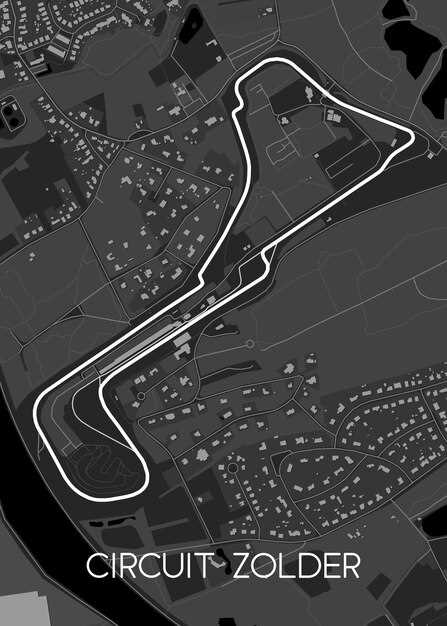
Silverstone Circuit, renowned for its rich history in motorsport, offers an exhilarating layout that challenges and excites amateur racers. Located in Northamptonshire, England, this iconic track serves as the birthplace of the Formula 1 championship and is steeped in a legacy that inspires racers at all levels. Whether you’re a novice behind the wheel or an enthusiast eager to improve your skills, understanding the nuances of this circuit is essential.
The track at Silverstone features a variety of corners, straights, and elevation changes, making it a true test of driving ability. From the high-speed corners of Maggotts and Becketts to the technical Chapel, each section of the track demands precision and control. Amateur racers will benefit from studying the optimal racing lines and braking points, which can significantly enhance their performance during practice sessions and race day.
In this guide, we will delve into the key elements of the Silverstone Circuit, providing insights into its distinct features, common racing strategies, and tips for newcomers looking to make the most of their experience. Understanding the layout intricacies will not only boost your confidence but also help you navigate this challenging venue like a pro.
Understanding the Silverstone Track Layout and Key Features

The Silverstone Circuit, renowned for its rich history in motorsport, features a complex track layout that challenges amateur racers. Spanning approximately 3.66 miles, the track combines high-speed straights with a mix of technical corners, making it essential to understand its distinctive segments for optimal performance.
One of the key features of the Silverstone track is the Hangar Straight, which allows racers to reach impressive speeds before approaching the challenging Stowe Corner. This area requires careful braking and precise steering to navigate effectively, as it can significantly impact lap times.
The Maggotts and Becketts complex is another highlight of the Silverstone layout. This series of fast, sweeping corners demands exceptional skill and control. Successfully navigating this section can yield significant time advantages, particularly for amateur racers looking to refine their technique.
Additionally, the Chapel Corner leads onto the famous Wellington Straight, presenting an opportunity for overtaking maneuvers. Understanding the strategic importance of this part of the track can enhance racing tactics, especially when competing against other amateur racers.
In conclusion, a thorough comprehension of the Silverstone track layout and its key features is vital for amateur racers. Familiarity with the unique characteristics of each section promotes improved handling and lap times, ultimately enhancing the racing experience on this iconic circuit.
Tips for Mastering Driving Techniques on Silverstone

Silverstone offers a unique layout that challenges drivers with its combination of high-speed straights and technical corners. To excel on this iconic track, it’s essential to focus on several driving techniques.
1. Understand the Track Layout: Familiarity with the track layout is crucial. Learn the sequence of turns, elevation changes, and the points where acceleration and braking are critical. Memorizing perfect racing lines will help you maintain speed throughout the circuit.
2. Brake Late, but Smart: The braking zones at Silverstone can be deceptive. While it’s tempting to brake late, ensure you do so efficiently. Practice threshold braking to maximize stopping power without skidding or losing control. Knowing the optimal braking points for each corner is essential.
3. Smooth Steering Inputs: To maintain momentum, keep your steering inputs smooth and gradual. Abrupt movements can upset the balance of your car, especially in fast corners like Copse and Maggots. Channel your focus on maintaining stability throughout the turns.
4. Emphasize Throttle Control: Throttle modulation is key to driving swiftly through corners. As you exit turns such as Chapel, gradually apply the throttle to prevent wheel spin. Finding the delicate balance between acceleration and traction will yield faster lap times.
5. Utilize Track Width: Silverstone’s layout often allows for wider lines. Don’t hesitate to use the entire track to your advantage. This can enhance your cornering speed and help with better positioning for the subsequent sections.
6. Practice Overtaking Techniques: When racing against others, strategize your overtaking approach. Be aware of potential braking zones, slipstream effects on the straights, and the best places to execute a pass without compromising your own line.
7. Optimize Car Setup: Ensure your car setup complements the track conditions. Pay attention to tire pressures, suspension settings, and alignment. A well-tuned vehicle will significantly improve handling and response on Silverstone’s diverse terrain.
Mastering these techniques will not only enhance your confidence but also improve your overall performance on the Silverstone circuit. Consistent practice and adaptation to track conditions are vital for every amateur racer aiming for success.
Best Practices for Safety and Car Preparation at Silverstone
Safety should always be your top priority when racing at Silverstone. Familiarize yourself with the layout of the circuit, as this will greatly enhance your ability to anticipate challenges and react appropriately. Understanding the various turns, elevation changes, and straight sections will help you assess potential hazards and improve your overall driving strategy.
Before hitting the track, conduct a thorough inspection of your vehicle. Start with the tires; ensure they are properly inflated and have adequate tread depth for optimal grip. Check the brakes for responsiveness and wear, as reliable stopping power is crucial for safety at high speeds. Additionally, confirm that all fluids, including oil and coolant, are at appropriate levels to prevent potential mechanical failures during your run.
Adjust your car’s setup to match the demands of the Silverstone layout. This might include optimizing suspension settings, aligning the wheels, and fine-tuning aerodynamics for improved stability and handling. A well-prepared car can make a significant difference in both performance and safety.
Wear appropriate safety gear at all times. A certified helmet, racing suit, gloves, and boots will protect you in case of an incident. Ensure that your racing harness is securely fastened and in good condition, as it plays a vital role in keeping you safe in the cockpit.
Lastly, practice situational awareness while driving. Stay alert to the actions of other racers and be prepared to react swiftly to any changes on the track. Maintaining a safe distance from other vehicles reduces the risk of collisions and allows for a smoother racing experience.



